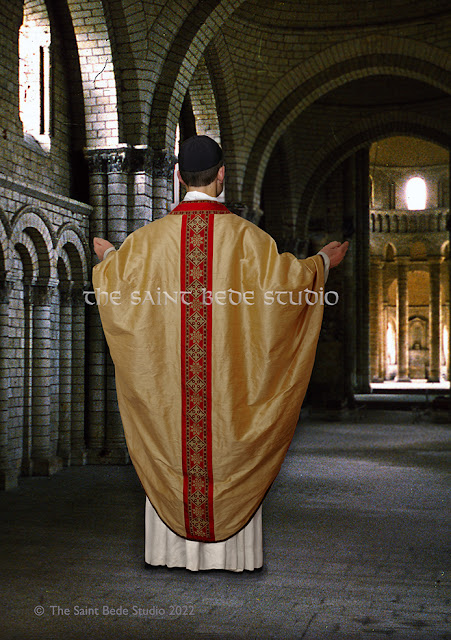In this Christmas Season, we are pleased to present a set of vestments made for Festal days.
The vestments of the Saint Bede Studio are beautiful in design, sound in construction and distinctive in appearance.
This set of vestments is in the style we call Saint Austin. It is a stylised chasuble common in the Gothic Revival period of the mid-19th century. The chasuble is long, but not wide and comes to a point at the front and the back. As made by the Saint Bede Studio, this style of vestment is very comfortable to wear. This particular set was made from a beautiful ecclesiastical brocade in a shade of ivory, it was lined in a mint green shade of taffeta and ornamented with a one of the Studio's unique braids ChiRho in colours of red, green, white and gold, enhanced with a matching galloon.
Please click on the image for an enlarged view.
The Saint Bede Studio : vestments made by Catholics for Catholics.
Enquiries : stbede62@gmail.com
Information on placing an order.















